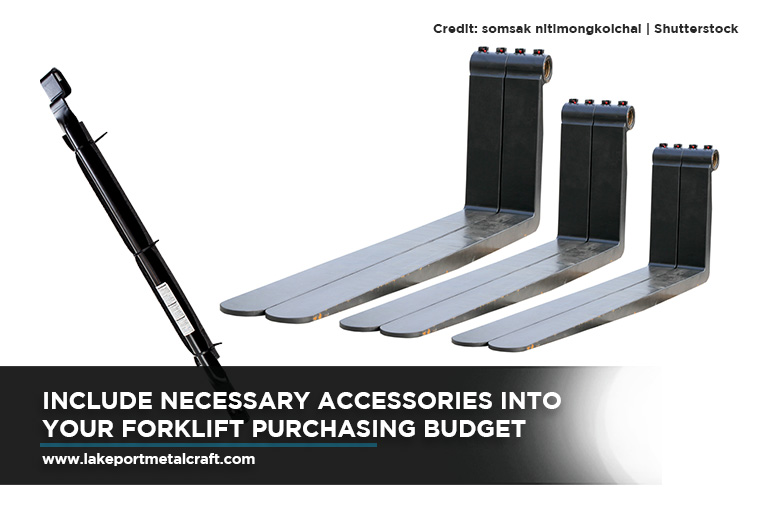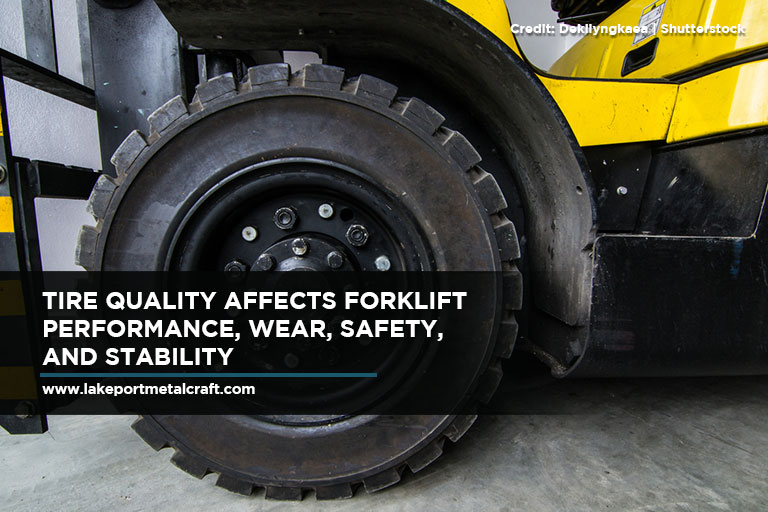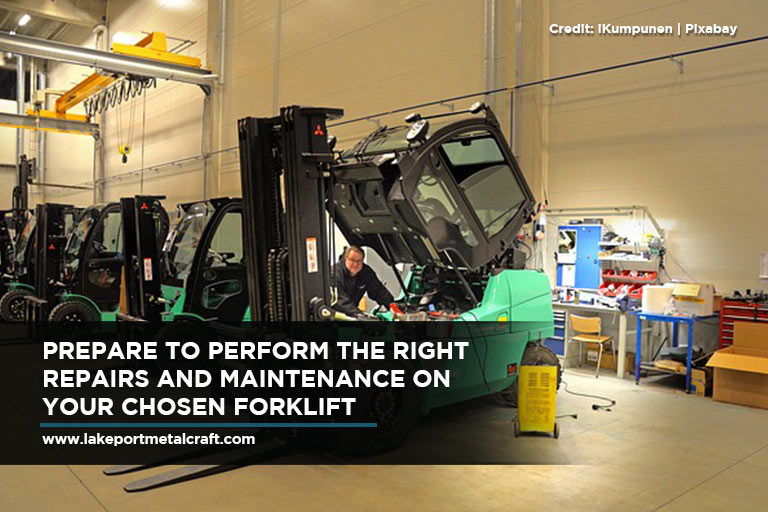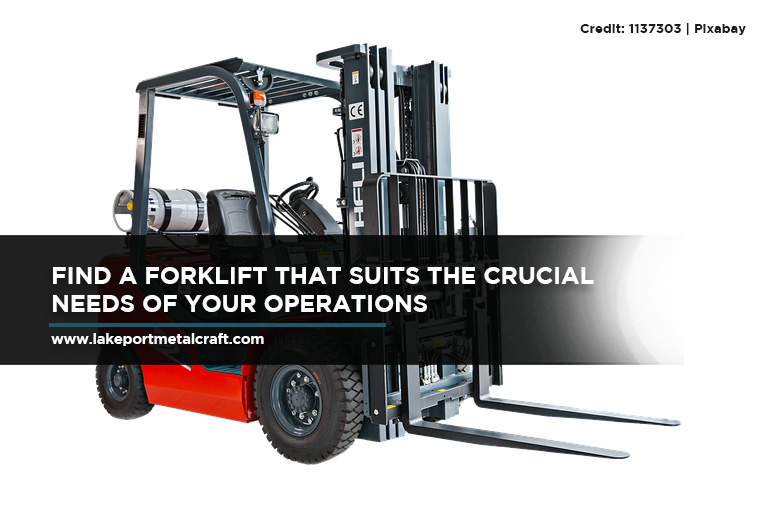Knowing where to start when buying a forklift can be a real challenge. Finding the right forklift for your company requires specialized insight if you hope to find the most cost-efficient and productive machine. In addition to the power source, you need to consider and evaluate a variety of factors that impact your long-term cost, including the forklift load and how high the machine can lift.
Consider this your buying guide to finding the forklift that best provides the service you or your customers need.
Consider These 6 Things Before Buying Your Forklift
Forklifts are a hefty investment so you need to ensure that you get the most out of your purchase.
To make sure you get the right kind of forklift for your business, consider the following factors:
1.New vs. Used
One of the most common questions to ask yourself is whether you are buying a new forklift or if a used unit would do. With the variety of forklifts available, even this kind of detail can save you time and boost your productivity.
Some buyers never even look at used forklifts. However, for some business owners, buying a used forklift isn’t a decision at all, but rather the only option available.
2.Capacity
When choosing forklift capacity, you need to consider the load because more capacity means bigger costs. Make sure that you consider the average load weight, attachments, and any trends or changes that you have experienced over the past years.
3.Accessories and attachments

Attachments can greatly enhance productivity and reduce total capacity, so take accessories and attachments into account when choosing your forklift. Some accessories and attachments that you might need to purchase are:
- Side-shift – A side-shift allows a carried load to be moved left or right within a given span.
- Single-double – A single-double allows a standard forklift to carry two pallets at a time.
- Rearguards – These steel bars, like the single-piece Backbone®, ensure the safety of your forklift operator.
- Fork Extensions – Fork extensions extend the fork length for improved material handling. They are made of heavy-duty steel and have a welded safety heel restraint to provide long-lasting durability.
4.Mast height
When choosing the mast height, you need to start with your maximum load weight and choose a mast to suit that weight or even a little heavier.
If your forklifts operate in and out of trailers or in an environment with low clearances, you need a mast with a free lift.
5.Engine type
If your application involves food, pharmaceuticals, or working underground, you will need an electric-type engine. On the other hand, you will need diesel engines when your use involves heavy-duty applications. Other applications where the forklift works remotely will require the convenience of an LP forklift.
6.Tire type

If you are operating your forklift primarily indoors, cushion tires are an excellent choice as they are less expensive and have a tiger turning radius. However, if you are primarily operating outdoors, you need to use solid pneumatic tires. Other forklift tires such as polyurethane, cold-prepped and static-resistant are available for specialty applications.
Common Mistakes When Buying a Forklift
First time buying or unsure about what to purchase? Avoid these common mistakes:
- Buying based on price alone
Don’t automatically buy the cheapest forklift that meets your minimum capacity requirements. Remember that there are other factors that you need to consider before buying a forklift other than the price and capacity. - Not testing the forklift pre-purchase
If you have already decided on what forklift to buy, rent one and test it before purchasing the forklift and try it out in your actual work conditions. Make sure that you ask your operator for input, too. - Not buying from a dependable forklift dealer
You need to buy your forklift from a dependable forklift dealer who can perform emergency and general maintenance when you need it. if you don’t buy from a reliable dealer, there is a chance you may be purchasing a low-quality machine that easily breaks down. - Not anticipating ownership costs
Spending a little more upfront can save you on maintenance and repair costs down the road.
No prepared maintenance plan

Make sure that you get a forklift maintenance plan. This helps you detect problems on your forklift early, helping to reduce downtime and keeping your operators safe. Having a maintenance plan is key to increasing the lifespan of your forklift.
What Should I Look for in a Used Forklift?

Buying used forklifts makes sense economically, especially if you’re using the unit for less than four hours a day. While a new machine is good, you can still find an excellent used forklift by paying attention to the following criteria:
- Age
The age of the machine is one of the first things you need to consider. The year of manufacture is usually imprinted within the serial number, stamped near the mast, or reflected in the series.
If you’re buying within the current year, expect to pay 100% of the book value. But if you’re trying to save money, look for a machine that’s at least 5 years old and give more weight to the other criteria.
- Service hours
When looking at the service hours, look at the deadman hours. This meter is activated when the operator is standing on the dead man pedal, showing that the machine is actually being used. When buying a used machine, those with part-time use are the best.
Additionally, when buying a 5-year old machine, 6,000 hours or less would be preferable.
- History
You’ll find a big difference between a forklift that was used for a basic warehouse stocking, and one that is operated within the construction trades. Similar to other machines, a forklift is also subject to wear and tear depending on the environment. So pay close attention to both its function at its current location and what type of conditions are involved.
Here are a few inspection tips for when you’re buying a used forklift:
- Check the forks and mast
Begin your inspection facing the front of the forklift and check for any cracks, bends, or other types of distortion. For minor bends, have the forks straightened.
However, with cracks, be wary of large, deep ones as it can make it unsafe for a forklift to lift a load at full capacity. With the mast, inspect it for any cracks or welds, and then ensure that the mast pins and tilt and side-shift cylinders are secure.
- Look for gaps in the lift chains
When looking in the middle of the mast you should view the lift chains for any missing or corroded links/pins. - Inspect the frame, cowling, canopy, and tires
Check the body of the forklift for any signs of damages, pausing on both sides of the forklift to inspect the cowling as well. Don’t forget to inspect the canopy and make sure the canopy has no damage that could affect its ability to protect the operator in the event of a dropped load. Finish frame inspection by checking the tires for chunking (missing rubber) and the wheels for missing lug nuts. - Look at the cab and the general operation of the forklift
Step into the forklift operator’s seat and note whether the seat is securely fixed into the position and if the seatbelt is functioning properly. You also need to check for smooth operation as you operate the loader arms. Lastly, check all other controls and safety devices for operation, including rear back-up alarm and flood lights. - Check the engine compartment
Start up the forklift and check for any odd sounds coming from the engine compartment.
When to Buy a Brand New Forklift

New forklifts are designed for heavy use and come in 12-36 month warranties. If your operation runs for more than 4 hours on end, then you can opt to buy a new one. This is also a good idea if:
- You need specialized accessories, which a new machine can perfectly cater to
- You have unusual mast height requirements that are hard to find in a used machine.
- You are matching other forklifts in your fleet
- You want a higher tax write-off.
Here are the pros and cons of buying a new forklift:
- Pros
- You don’t need to bargain because you’re paying the listed price.
- Buying a new forklift allows you to have the newest and latest model in the market.
- A new lift will last longer and can handle longer hours.
- All the parts of the forklift will be brand new contrary to used forklifts.
- Cons
- A brand new forklift is very expensive.
- The financing and purchasing can involve very lengthy paperwork.
The Best Forklift for You

The best forklift is the one that suits your needs best. Whether you are buying a used or a new one, what matters is that it can do the job well and can meet the needs of your operation.
The right accessories further improve the functionality of your forklift. For a trustworthy rearguard that ensures the safety and protection of your operators, use The Backbone®. Easy to install in 30 minutes, The Backbone® requires no welding or drilling. Talk to us to get your own Backbone® through these channels:
- Toll Free: 1-855-272-1445 (North America)
- Fax: 905-944-1550
- info@lakeportmetalcraft.com
